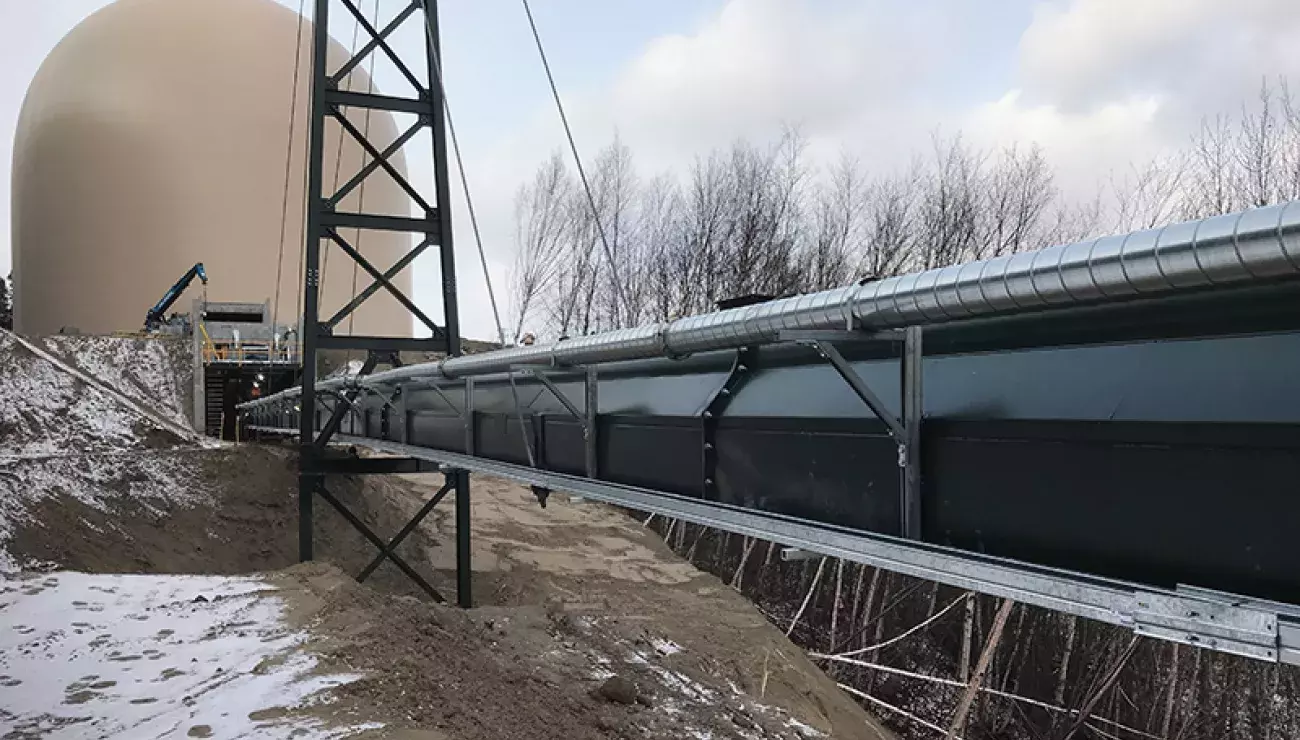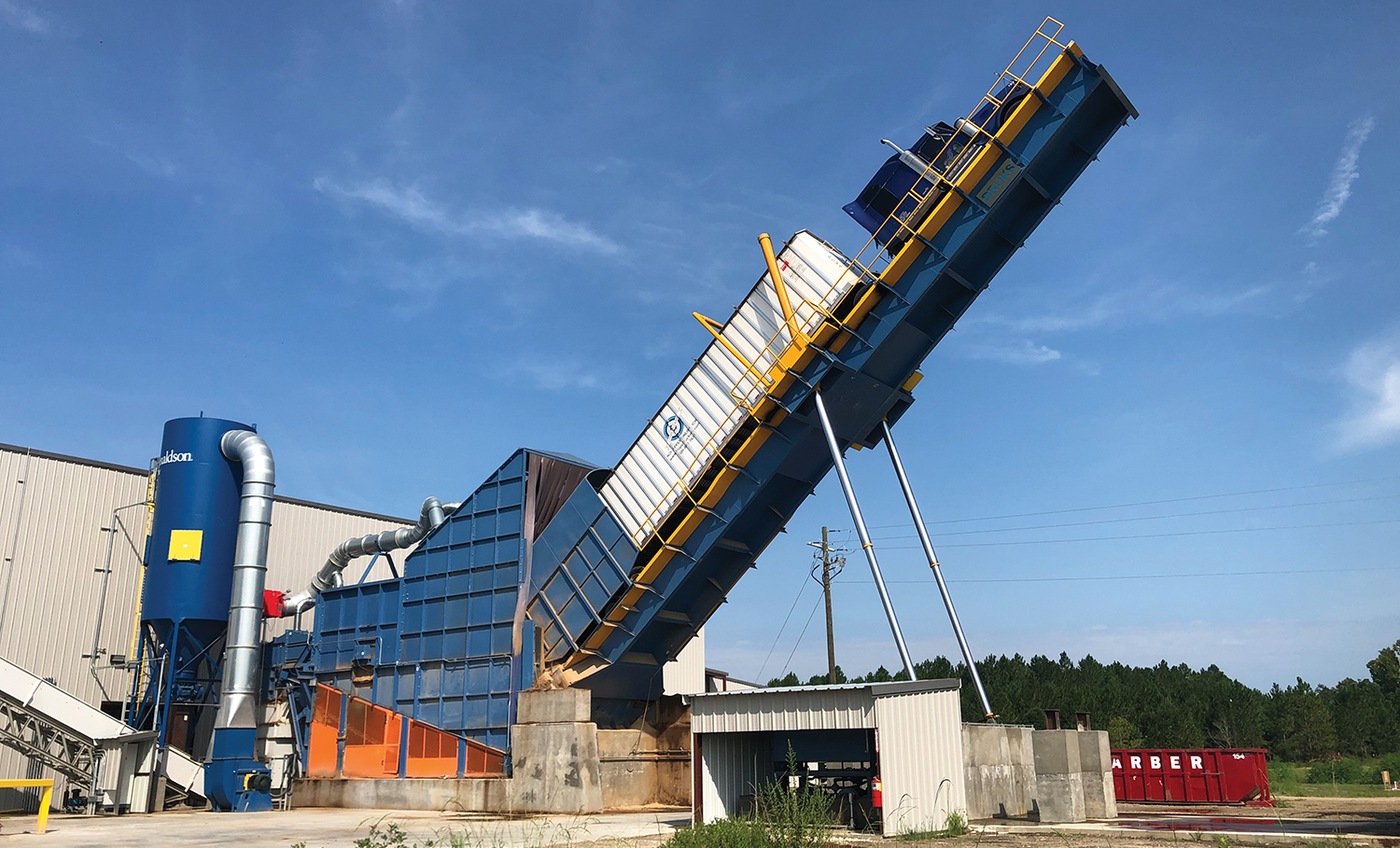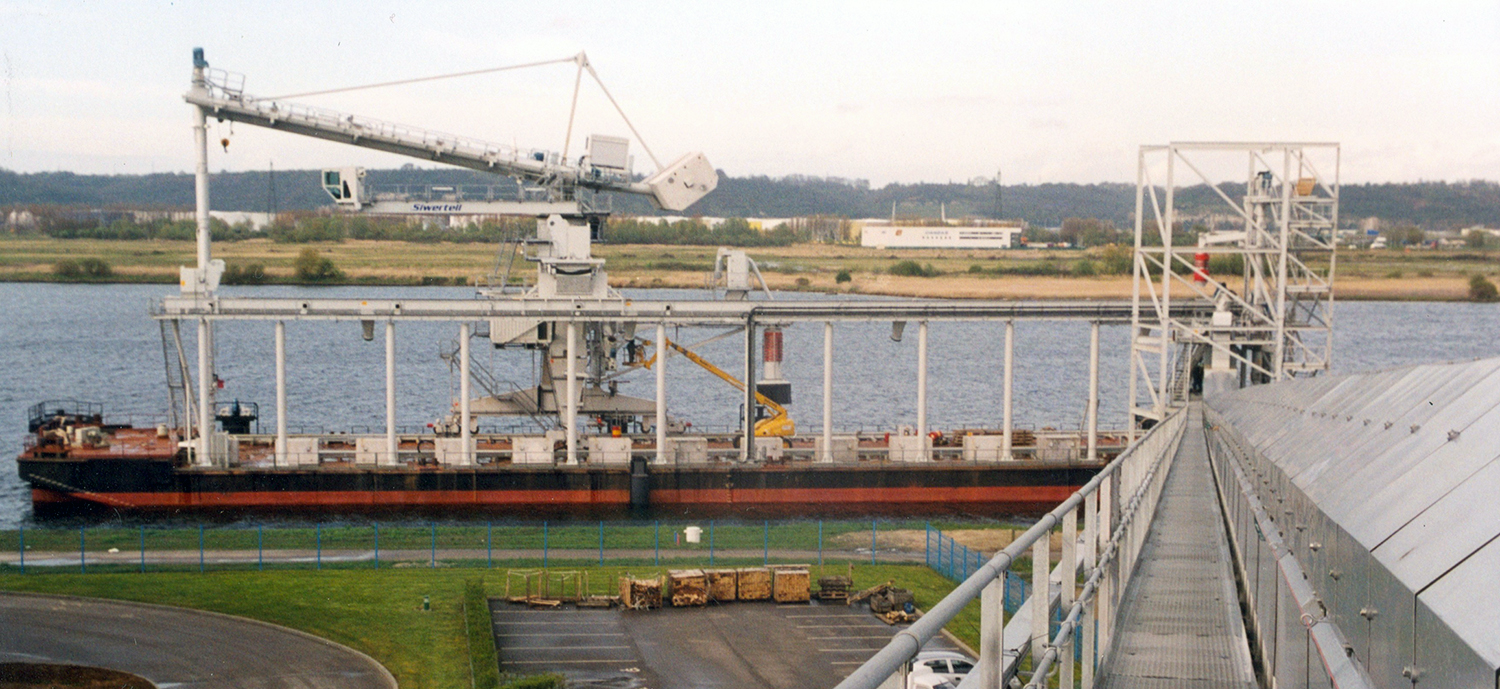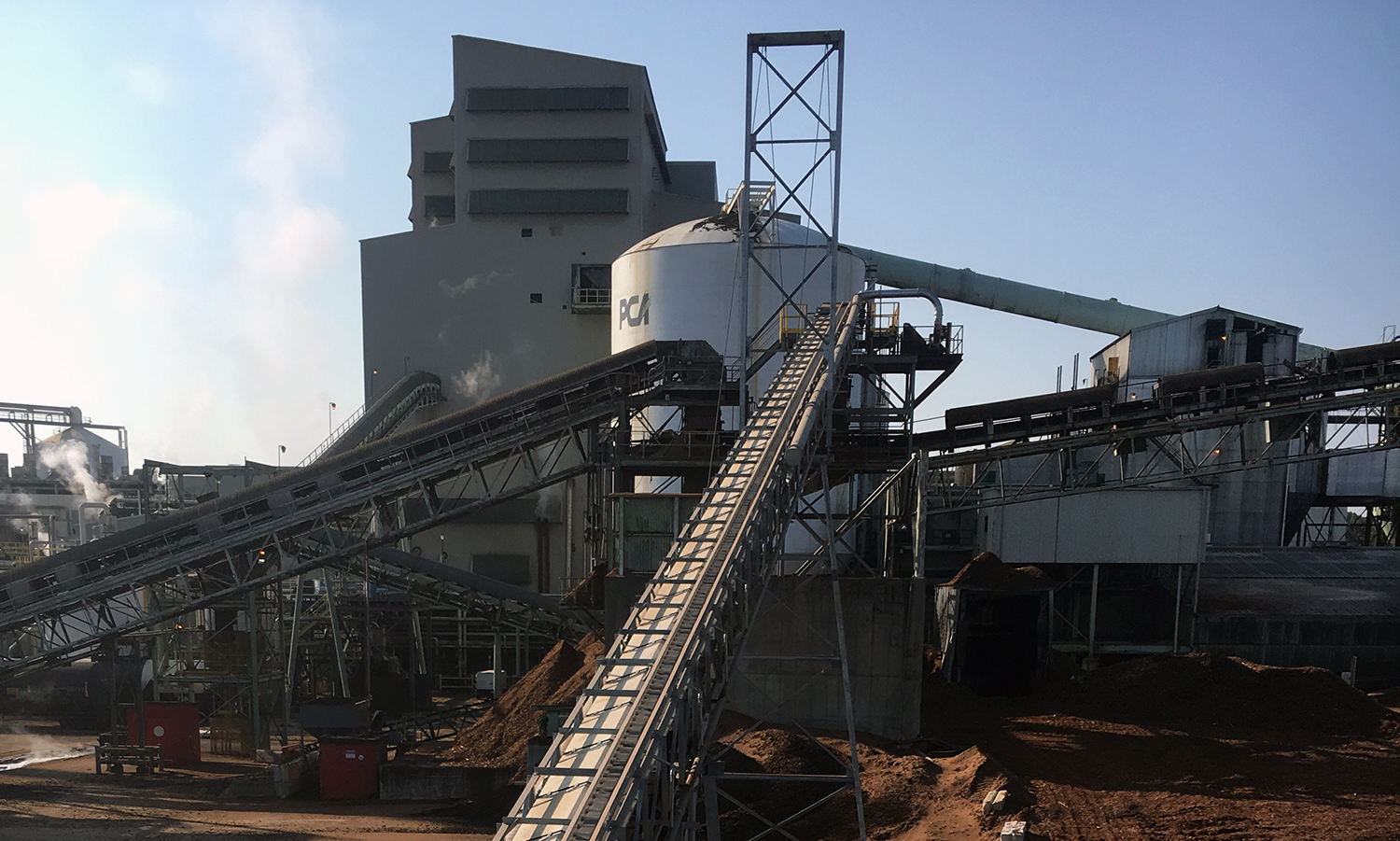
Dust: an issue solved with Bruks Siwertell technology
22 Apr 2022Demand for dust-proof solutions is increasing, driven by environmental, societal, and cost factors; from Bruks Siwertell’s perspective, this is timely, as it has all the technology an operator needs to solve the issue of dust.
Although a natural part of handling dry bulk materials and processed wood, for powdery cargoes, dust is essentially the product, whereas for others, its presence can indicate material degradation, for example with biomass pellets or grains.
Whether it is the asset or the nuisance, fugitive dust emissions should be prevented from entering the atmosphere and impacting the environment, and from spreading to work areas, affecting personnel, gumming up machinery, and potentially increasing fire risk.
From one end of the supply chain to the other, Bruks Siwertell has developed all its key systems with the prevention of dust emissions in mind. Spanning the processed wood and dry bulk handling industries, we have leveraged more than a century of combined expertise in the development of our dust control solutions.
Every dry bulk material transfer has the potential to generate dust, and some more so than others. Aside from the obvious powdery cargoes, such as cement, some wood and agricultural residues, dry shavings and sawdust are inherently very dusty, while wet chips and barky fuels are less so.
Controlling the cloud
Materials like wood residues and sawdust are by-products from other industrial practices, and are a valuable raw resource in many industries, from pellet plants, where the production of biomass pellets can be used to offset coal in power stations, to panelboard and pulp and paper manufacturing.
They often arrive at production plants on the back of bulk trucks, traveling loose in large trailers. There are various techniques for offloading them quickly; but all rely on tipping the truck and trailer out into a receiving hopper. If not well-managed, this part of the handling process has the potential to generate a considerable dust cloud, exacerbating environmental issues, but also presenting a fire risk.
Bruks Siwertell’s range of back-on, extended arm and drive-over truck dumpers have numerous dust mitigation features. These include fixed or articulating covers for receiving hoppers, enclosed on all sides, along with dust extractors and dust collection systems. These systems negatively pressurize the air, capturing any dusty material in the receiving area and reintroducing it back into the system for use, ensuring that no usable product is being lost.
“Our truck dumper systems minimize dust emissions by utilizing a combination of technologies,” says Christopher Duffy, Area Sales Manager, Bruks Siwertell. “For example, a covered receiving hopper and dust collection system combine to deliver the most efficient, optimized, safe unloading process.
“It is possible to deliver a truck dumper and receiving system that can ensure close to zero fugitive dust emissions,” explains Duffy.
Bruks truck dumpers use a set of hydraulic cylinders that raise a platform at one end, lifting the entire truck. Full lift and lower cycles are completed in approximately four minutes, delivering the capacity to unload biomass at a rate of up to 85t/h.
“Although the hoppers, receiving systems and dust collectors provide very good dust control, the angle at which our truck dumpers work is another advantage. They have a low-profile design, which means that trucks tip their load as close to the ground as possible. This significantly reduces the impact, and therefore dust cloud, of material landing in the hopper,” he notes.
Upgrades enhance operations
Over the years, Bruks Siwertell technology has advanced, but the leeway for dust emissions from industrial practices is rapidly diminishing. Therefore, retrofitting dust control measures and upgrading existing systems is gaining industry interest.
A number of operators are already benefiting from this strategy. “It is particularly appealing to biomass production companies that regularly handle dusty, processed wood. Their existing dry shavings receiving and storage equipment, including truck dumpers, may not have been originally fitted with dust collection systems or covered hoppers, so relatively simple upgrades can yield very significant results,” Duffy highlights. “Furthermore, if conveyors are replaced with totally enclosed systems, spillage is also not an issue. For some operators we are predicting a doubling of raw material throughput within the plant when switching to totally enclosed conveyors.
“We can generally design new dust collection systems to suit all existing truck receiving systems, along with, for example screening systems, which remove any oversized dry wood shaving material received by a facility.
“The Bruks Siwertell dry shavings receiving system is totally enclosed, preventing dust emissions and protecting the material from any external moisture; a double-bonus,” adds Duffy. “In fact, this is particularly beneficial to pellet plants; by protecting the flow of raw material from the elements, it potentially means that the dry shavings do not need to pass through the plant’s dryer, which can often slow the process down or mean that the plant has to increase its dryer capacity.”
Contained conveyor systems
Enclosed screw conveyors are a good example of how facilities can contain materials and maintain high conveying capacities.
Siwertell screw conveyors offer particular advantages to dry bulk operators. They are robust and hard-wearing, so for the cement handling industry and for those that handle much more abrasive materials such as clinker and aggregates, screw conveyors offer very reliable, cost-efficient performance and minimal maintenance. But with particular reference to dust emissions, as they are totally enclosed, they bring these down to negligible levels and ensure spillage-free material transfers.
The same principle extends to Bruks Siwertell’s range of Siwertell screw-type ship unloaders, from the road-mobile and port-mobile models up to the large, very high-capacity stationary or rail-mounted systems. Their success has been founded on the ability of every Siwertell unloader to deliver market-leading through-ship capacities, reliability, long service lives, and crucially no spillage or dust emissions. From the inlet feeder in the hold, to the downstream receiving system, the entire material handling process is totally enclosed.
“We want to make sure that as much as possible of any shipment of cargo, whether it is on a bulk truck, in a ship’s hold, or on a conveyor, makes it from source to destination, and crucially, maintains its quality. Furthermore, this has to be achieved in the most environmentally friendly and efficient way possible,” he adds. “Bruks Siwertell has focused a great number of resources on addressing exactly this.”
Conveying dusty cargoes over any distance, but particularly long distances, can also present challenges. Traditional, idler belt conveyors have done a good job for centuries and offer very high capacities for relatively low investment costs. But they do have some intrinsic drawbacks. The rollers need high levels of maintenance to prevent seizing and therefore the potential for an idler-can fire, delicate materials can degrade during the process as the belt passes over multiple rollers, generating a bumpy ride and more dust, and as materials are conveyed, they often undergo a sifting effect. Belt conveyors also need secondary covers to contain dust and protect the cargo from the elements.
New ways of thinking
Aside from totally enclosed screw conveyors, and covered belt conveyors, Bruks Siwertell offers alternative conveying solutions for mitigating dust during dry bulk material transfers. This includes air-supported, low-friction conveyors, such as The Belt Conveyor™ and the Tubulator™.
In both cases, idlers beneath the belt are removed and replaced by an air cushion. To create this, The Belt Conveyor uses a header of pressurized air for each three meter section and the Tubulator uses a series of in-line, low-pressure fans.
Each system offers unique advantages. The Belt Conveyor shares the geometry of a 35-degree idler conveyor; therefore, it still meets the industry-standard calculations for the USA’s Conveyor Equipment Manufacturers Association (CEMA). It can carry a wide variety of materials and delivers high-capacity conveying with minimal equipment wear and very low operating costs.
As for the Tubulator, it achieves capacities up to 40 percent higher than conventional belt conveyors and uses innovative suspension cable tower technology that enables it to span long and high installations.
The environmental gains that both these conveyor systems offer are also far-reaching. A fully enclosed cover provides dust-free operations, eliminates product losses and minimizes any noise production. Low-friction conveying also means that its energy consumption demands are minimal in comparison with traditional systems.
“The challenge in dry bulk handing and in wood-processing is that these are inherently dusty or dust-generating processes, but change is possible and necessary,” Duffy says. “Spreading dust poses operational risks; it wastes cargo, and the fuel and emissions spent in carrying it. It also means lengthy clean-up procedures that cost money. Preventing dust emissions in the first instance is a Bruks Siwertell speciality and we are ready to help any operator overcome their dust issue.”
PLEASE CONTACT US FOR MORE INFORMATION

 Bruks-Siwertell
Bruks-Siwertell


